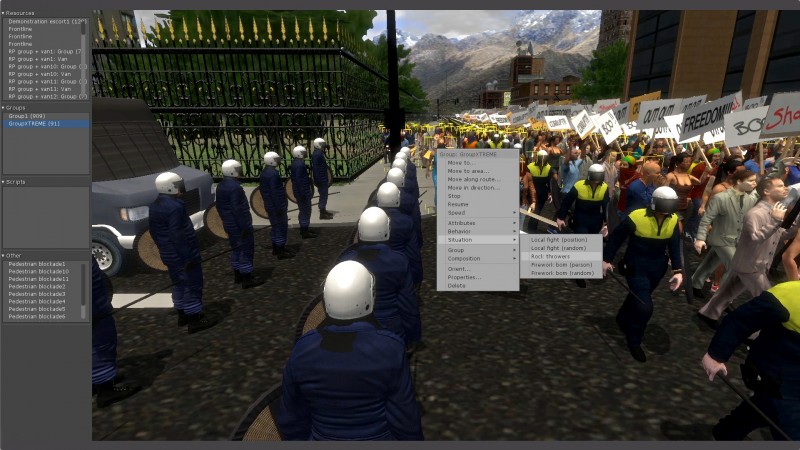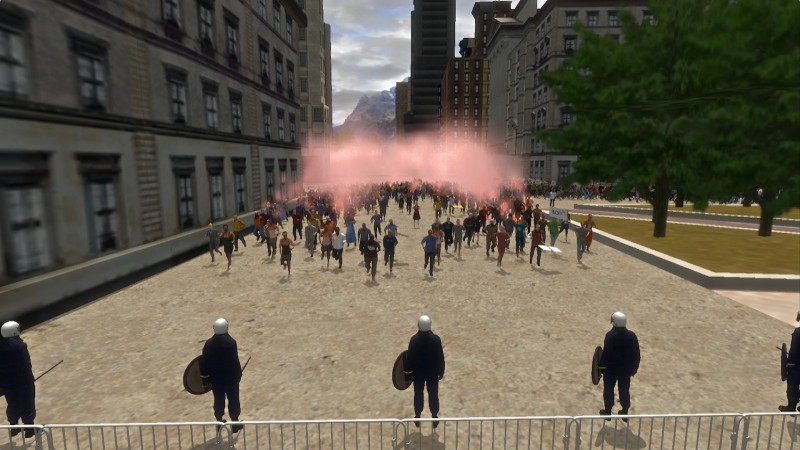Stéphanie Lagarde
Deployments
* 1982 in Toulouse, FRA, lives and works in Paris, FRA
studied at the ENSAAMA Olivier de Serres, Paris, FRA, and the Ecole Nationale Supérieure des Arts Décoratifs de Paris, Paris, FRA
We control the game. The demonstrators on the screen are not just our avatars, they are fighting for their and thus for our rights. They demand a society without corruption and crime, a life in freedom. Virtuality becomes part of our own reality. And the imagined place could be anywhere.
Déploiements shows how a system of control in a state functions on both a physical and psychological level. The video draws parallels between two types of simulation: a team of fighter pilots mentally preparing for an aerobatics show and a crowd control software often used by the police for training purposes constructing a civilian mob. The composition of video game aesthetic and military recordings of soldiers is guided off screen by militarily coded commands. Crowd control is represented in the computer simulation of an empty city. As soon as the mouse cursor appears over the imagined city, a click adds a straight line of identical police officers to the scene. They are faced with a crowd of demonstrators marching toward them with placards stating their demands.
What Lagarde’s work makes clear is the tension between the rehearsed choreography of authoritarian order and emphatic civilian disorder. The movements of the police follow a pattern, like a dance performance, while the demonstrators seek to disrupt this order to gain control of the streets. Déploiements not only questions the social situation but also practices media critique. »I see you«, whispers the off-screen voice, alluding to surveillance in public space, but also to the transparency of our own identity in the social media.
Lagarde’s computer animation represents a centuries-old fight between government authority and protesters. Not only in Paris today, demonstrations often lead to riots, excesses, and injuries. Are we the ones who actually control the game? Or are we just tokens in a surveillance system to which we must defer?
Diana Storcks
Artist Statement
Déploiements zooms in on the State’s practice of control, both in the air and on the ground, both symbolic and effective. The video draws a parallel between two types of simulation: It shows us the aerobatic unit of the French Air Force rehearsing the choreography of an air show through a series of coded instructions, and a fictional protest simulated by a crowd control software used for police training purposes in urban environments.
With tactics of saturation and disorientation of the senses, both the State forces and the protesters adopt a strategy oscillating between visibility and invisibility.
While the work reveals a State forgetting the materiality of flesh and the nature of human emotions, issues of identity and identification of citizens arise in the analogous perimeters of the nation, the city and the demonstration.
Stéphanie Lagarde


